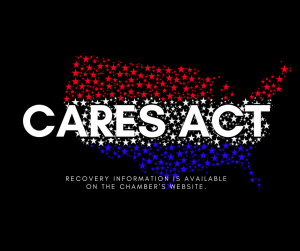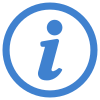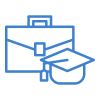COVID-19 UPDATE Small Business Resources & Unemployment Insurance
Gov. Jay Inslee announced additional steps to help small businesses mitigate the economic impacts of COVID-19:
• The Working Washington Small Business Grant, through the Governor’s Strategic Reserve Fund and administered by the Washington State Department of Commerce with the help of county economic development organizations. The grants will provide up to $10,000 for small businesses under 10 employees. Businesses can use this money to pay for rent, utility bills, supplies, inventory and other operating expenses. To apply for an emergency grant, visit coronavirus.wa.gov.
• Business resiliency assistance, through the Washington State Department of Commerce by partnering with organizations that serve economically disadvantaged communities across the state.
• Forgivable loans, through the U.S. Small Business Administration. Small businesses, non-profits, independent contractors or self-employed individuals in need of financial help may be eligible for a forgivable loan from the SBA. Beginning last Friday, local banks began taking SBA applications and issuing forgivable loans. For more information go to sba.gov.
News from ESD
The Employment Security Department (ESD) has received an unprecedented flood of applications for assistance and extremely high numbers of phone calls and emails. They are doing the best they can to meet this need by hiring additional staff, expanding service hours and upgrading their technology.
Many people also have questions about the recent federal stimulus package and the enhancements to eligibility and available benefits for individuals. To address your questions and to find out more information, please do not call their toll-free numbers first. Instead please:
• Visit their website at esd.wa.gov.
• Sign up for their COVID-19 action alerts to receive the most recent information possible about benefits.
• View their Frequently Asked Questions for Workers and for Businesses.
• Use their checklist before applying for benefits.
IMPORTANT: ESD officials tell us that if a person’s issue can only be resolved by speaking to an agent, they should continue calling, even if they must do so repeatedly, and that thousands of individuals are getting through by phone every day. Also, they assured us that regardless of when a person gets through, they will receive retroactive payments back to their eligibility date.
ESD Snapshot
For the week ending March 28th, ESD received more than 180,000 new claims for unemployment insurance (that’s more than seven times the peak week in the 2008/2009 recession). In addition to the initial claims for unemployment insurance, ESD processed more than 350,000 total weekly claims, resulting in over $42,000,000 flowing to Washington households that week. In total, since March 16, ESD has put more than $67,000,000 into people’s pockets and into the economy. To dig deeper into these figures to better understand the county by county or industry sector breakdowns, go to ESD’s labor market website.
These are some of the things the ESD is doing to reduce flow and increase capacity:
Reduce calls:
• Improved website – including a robust frequently asked questions section.
• Rolled out an action alert newsletter to send information and instructions on new benefits.
• Deliver automated messaging to all current enrollees instructing them on what to do to access the new benefits.
Increase capacity:
• Expanded call centers hours to include Saturdays, and staff is also working on Sundays to return phone calls.
• Hired new staff, reassigning staff from across state government and bringing on temporary contracted help.
• For simply questions, introduced virtual chat and a 1-800 number on WorkSourceWa.com.
• Increased bandwidth to allow more simultaneous sign-ups.
The ESD website environment has remained stable and is servicing thousands of users every day. 95 percent of applications are coming through the website – and, once someone is approved, since ESD waived the waiting week, it’s only taking 7-10 days for people to get their weekly benefit.
Secure Access Washington ID authentication fix
Users with multiple accounts, or with accounts set up on old email addresses they can no longer access, would get locked out of the system and required to call to reset their information. Since getting through over the phone is not easy under current conditions, ESD rolled out a fix to the Secure Access Washington identification authentication system. This fix will make a significant difference for a number of people trying to access the system.
Federal program implementation
The ESD is preparing for the implementation of the federal stimulus programs included in the CARES act by upgrading their technology systems so that on April 18, they can begin accepting applications for the three main elements of the new law:
• Pandemic Unemployment Assistance – expands benefits to those directly impacted by COVID-19 who are not otherwise eligible for Unemployment Insurance in Washington State. This will be available until December 26, 2020 and is retroactive to February 2, 2020
• Pandemic Unemployment Compensation – increases the weekly benefit amount by $600 increase for all unemployment assistance recipients (including those already on Unemployment Insurance or participating in SharedWork). It runs until July 25, 2020 and is retroactive to March 29, 2020.
• Pandemic Emergency Compensation – adds 13 additional weeks of benefits on top of the standard 26 weeks (if needed). It runs until December 26, 2020 and is retroactive to March 29, 2020.
All of these benefits will be retroactively paid from the time people lost their jobs or otherwise became eligible under the federal CARES Act. So, once approved, they will receive a lump sum payment of all benefits that are owed to them at that point. They will then be able to file weekly claims for benefits moving forward.
Independent contractors, self-employed & fewer than 680 hours
These benefits will expand support for individuals who typically do not qualify for unemployment insurance, such as those who are self-employed, independent contractors and those without enough hours in the previous year. This will make a tremendous difference for many families in our state. The best course of action for those not currently eligible for Unemployment Insurance, is to go to the ESD website and sign up for COVID action alerts. This will be the fastest way to get the most up-to-date information about when and how they can access their benefits.
Family First Act
The ESD will soon be posting information, in partnership with Labor & Industries and Commerce, on these new programs such as Paid Sick Leave, Paid Family and Medical Leave, as well as the Paycheck Protection SBA Loan Program and the Emergency Injury Disaster Loan SBA Loan Program. This will be done through the Joint Information Center with materials and information published on the consolidated website: coronavirus.wa.gov

The Small Business Administration (SBA) and the Department of Treasury have begun releasing the information that will guide the programs created through the Coronavirus Aid, Relief, and Economic Security (CARES) Act.
To stay up to date on the implementation of these programs, please visit the following websites:
- SBA – here you will find information on all COVID-19 related programs that SBA is providing, including the Paycheck Protection Program, Economic Injury Disaster Loans and Emergency Grants, and Small Business Debt Relief.
- Department of Treasury – here you will find information on the Paycheck Protection Program, as well as other tax provisions meant to help employers, including non-profits.
To help small business owners and entrepreneurs better understand the new programs that will soon be available to them, we have created a comprehensive guide to many of the small business provisions in the CARES Act that was passed by Congress on March 27. These programs and initiatives are intended to assist business owners with whatever needs they have right now.
While these programs are being implemented, you may continue to use this guide as a source of information about the major programs and initiatives that will soon be available from the SBA and Treasury. Once complete guidance has been announced for all of the programs, we will update the guide to reflect that guidance.
Download the guide here.
Coronavirus (COVID-19): Small Business Guidance & Loan Resources

COVID-19 ECONOMIC INJURY DISASTER LOAN APPLICATION
We understand these are difficult times. Please know we are with you through every cycle of your business. The following are the most frequently asked questions we have been receiving via phone calls and emails:
Q: Where do I find the SBA Disaster Loan application?
A: Apply online at disasterloan.sba.gov.
Q: Is my county eligible for an SBA Economic Injury Disaster Loan (EIDL)?
A: The entire states of Washington and Idaho are now eligible.
Q: Who can help me with this technical question about how to complete the SBA loan application?
A: Please direct all technical questions to the SBA Office of Disaster Assistance Customer Service
Q: Can I come to the SBA office in-person for help with my loan application?
A: No, as of Tuesday, March 24, the SBA Seattle District offices in Seattle and Spokane are closed to the public in order to comply with the Washington Stay Home – Stay Healthy Order. All technical questions should be directed to the SBA Office of Disaster Assistance Customer Service Center.
For a general overview of how to complete the SBA EIDL application, register for this Washington Small Business Development Center (SBDC)-hosted webinar on Friday, March 27. RSVP now.
Q: Is the SBA Seattle District Office still open?
A: Yes, although we are closed to the public for in-person visits, you are welcome to reach out to us by email at infosdo@sba.gov or by phone at 206-553-7310. Please leave a message and you will receive a call back as soon as possible.
Q: What other small business resources are out there?
A: Connect with our SBA Resource Partner Network for virtual mentoring and advising. For a full list of small business resources related to COVID-19, visit www.sba.gov/coronavirus.
Q: What relief can I offer to my employees?
A: The Washington Employment Security Department (ESD) is posting updates on relief programs for employees in their online newsroom. The Idaho Department of Labor is posting updates about unemployment benefits on their COVID-19 page.
Q: What businesses in Washington are impacted and considered essential by the Washington Stay Home – Stay Healthy Order?
A: Get the list of essential small businesses directly from governor.wa.gov.
Q: How can I get the latest news and information for small business?
A: Updates for small business will be shared through these bulletins, and breaking news will be shared on Twitter.
More information at:





